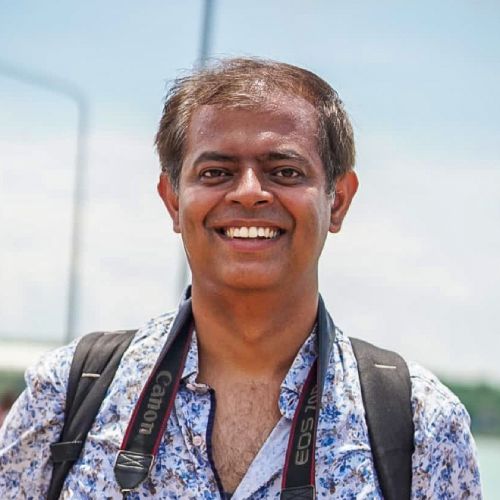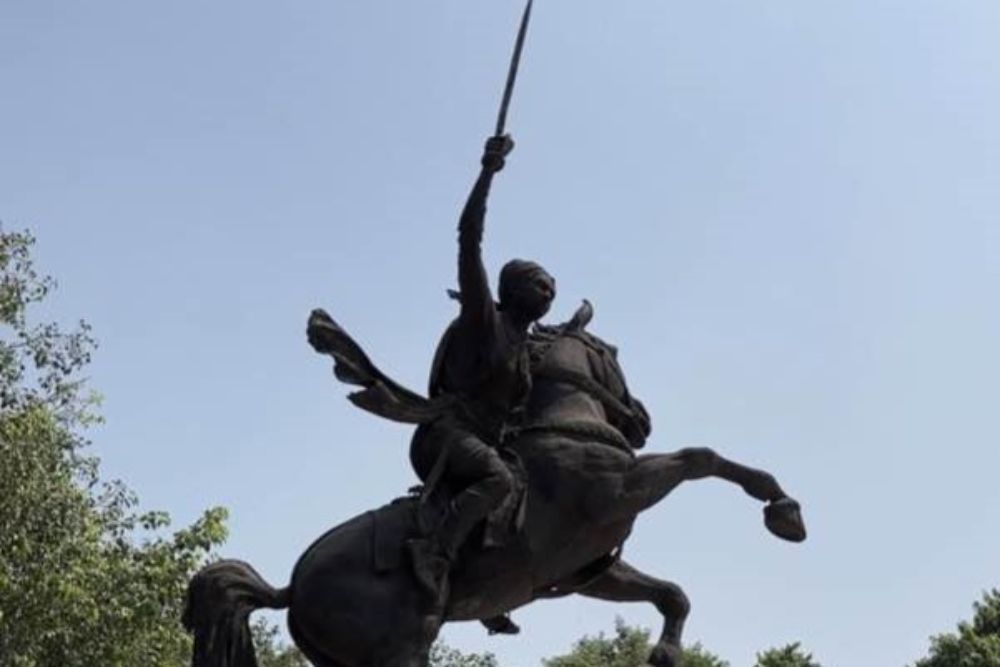Despite being so famous and located so close to Delhi NCR, somehow Gwalior always evaded me.Though, on a hindsight, I feel that perhaps Gwalior waited to reveal itself to me in a grand way. Irealised it was worth the wait when I was invited for an exclusive Times Passion Trails with noneother than Padma Shri K K Muhammed Sir. He was also the Experience Architect of the entire trailaround Gwalior.
Great company, exclusive hand-picked offbeat destinations around Gwalior and a week-long dreamstay at the luxurious Taj Usha Kiran Palace were the cherry on the cake on this special trail. I couldnot have asked for a better introduction to Gwalior. Years of wait felt meaningless as I exploredgems of Gwalior, one layer at a time under the best guidance.
Here is what I saw and did in and around Gwalior.
Temples of Morena: Digging Deep
I grew up hearing stories of how the temples of Bateshwar were restored magically by Shri K.K.Muhammed, India’s leading archaeologist. It was a mammoth task, impossible even because the Chambal and Morena region in the 2000s was in complete control of dacoits. Even the police and administration feared to venture in their territories.
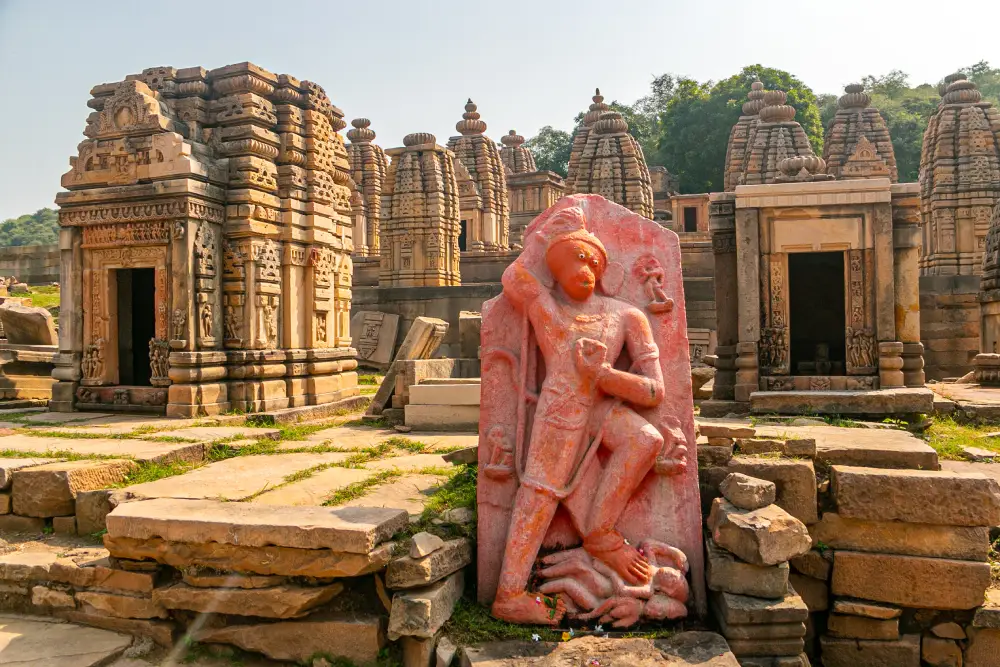
Step in Mr. K. K. Muhammed, who not only shamed the feared dacoit Nirbhay Singh Gujjar for smoking in the temple premises but also convinced the dacoit to grant him permission to start renovation and restoration of the temples. Located in a remote region, surrounded by verdant hilly terrains, I was left jaw slacked as I walked past the 200 odd Hindu temples in the vast Bateshwar group of temples. It was indeed an honour to be able to visit Bateshwar under the tutelage of its saviour.
Though Mr. K. K. Muhammed has done a lot of extensive work elsewhere in India, he is most well-known for his involvement in Bateshwar, excavations of the Ram Mandir and excavations at theBuddhist sites of Kolhua and Rajgir. It was surreal to listen to K. K. Muhammed sir in his ‘karmbhoomi’ where he spent decades bringing back to life hundreds of razed Hindu temples. Risingagain like phoenix, these temples are a sight to behold. It surely is one of the most impressive restoration work ever done in the world!
Next, we moved on to the Padavali temple. Huge figures of a lion and lioness at the entrance welcomed us. As I was swallowed by the main door of the mukhamandapam of the 18th century fortress, I was left agape mouthed at the incredible miniature carvings on every inch of the Mukhmandapa. This ornate gateway and even ceilings are embellished with rare 3D images of deities from the Hindu pantheon. The figure of Brahma, Vishnu and Mahesh stand out and so does the depiction of Krishna Leela.
I stepped down and explored other parts of the ruins which included a deep well, fort walls and unfortunately a completely razed Shiva temple which must have looked grand in its heydays.
A short drive ahead of Padavali, we arrived at the temple of Mitawali post lunch at the Padawali Retreat. “Wow, is that where we are heading to?” I exclaimed excitedly as a circular structure perched atop a craggy hill vied for my attention while I was still sitting in my bus. As soon as we got down, Muhammed sir introduced us to the local men who helped protect and restore the unusual temple.
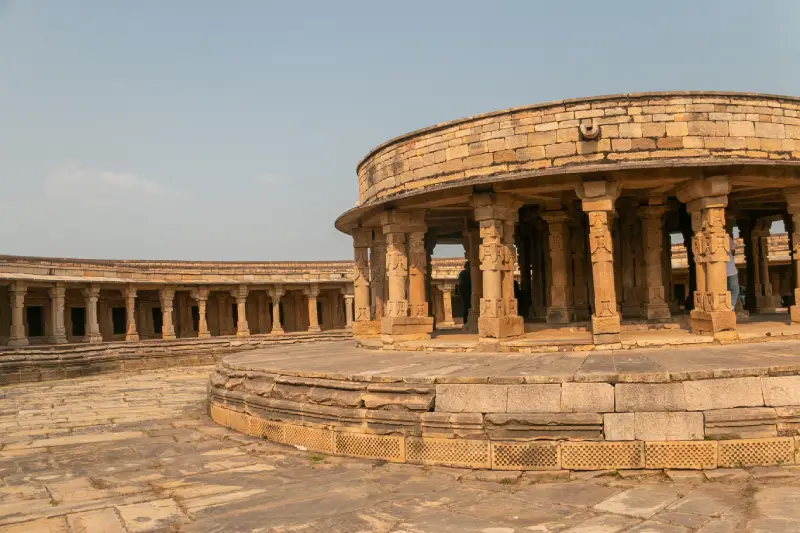
The climb of a few steps took us to the top, offering spectacular views of the village below. It is said that that the Mitawali temple was the inspiration behind the 20 th century Parliament Building ofIndia. The Chausath Yogini temple in Mitaoli is a round and pillared structure which is built byMaharaja Devapala. This is also mentioned in an inscription dated to 1323 C.E. This is also whereeducation in astrology and mathematics based on the transit of the Sun was imparted to the students.
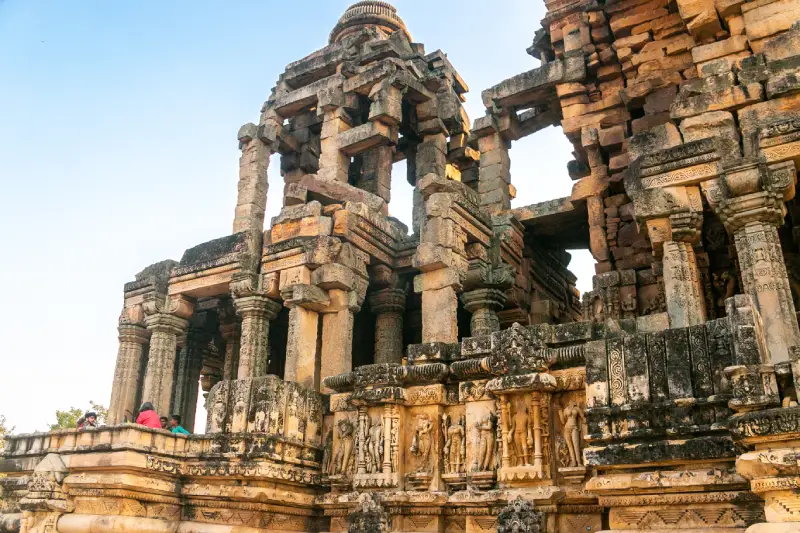
The last stop on this day was the unique Kakanmath temple. This 150-feet tall temple, sitting atop awide platform was visible to me from a far distance. Endless fields of tall Pearl Millet or bajra cropfailed to hide the temple. From a distance, it looked like it will fall anytime.
Muhammed sir explained, “Stone slabs stacked atop each other like a Lego toy makes it look like it will crumble anytime. It has stayed like this since the last 500 years or more. Even if a single stone is moved, the whole temple will fall. There are plans to dismantle the temple completely and rebuilt it so that it lasts for many more centuries to come.”
I craned my neck to admire the big and small carvings on every inch of the temple. It was heartening to know that this Shiva Temple is still a functional one. I offered prayers to the huge Shivalinga surrounded by the spartan walls of the garbhagriha right before the sundown.
This temple, which defies gravity is a wonder in itself. Partly in ruins, this lesser-known gem is constructed by Raja Kirtiraj way back in the 11th century C.E. What startled me is the fact that no adhesive, concrete or binding material was used in the construction of this unusual temple.
This speaks volumes about the architects and sculptors of ancient India. Kakanmath temple is indeed an unfinished poem in stone. It is located approximately one hour drive away from Morena.
Gwalior Fort: Standing Guard since centuries!
I have never seen such colourful blue tiles on the walls of Indian forts. This was the first thoughtwhich came to my mind as I stared at the tall walls of the imposing Gwalior Fort. “You can see theHindu and Islamic motifs and elements right on the external walls of the Fort”, Muhammed sir exclaimed as I studied each and every detail of the walls of Raja Man Singh Palace. A duck here, an elephant there. “All of them mean something!”, Muhammed sir added.
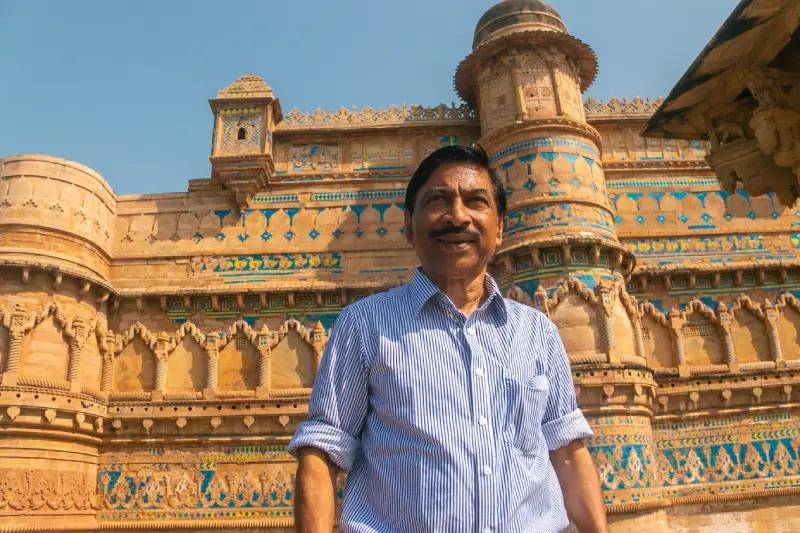
A small detour from the fort led to Gurdwara Data Bandi Chorh Sahib and another to the Chaturbhuj Temple, which is home to the first ever depiction of zero on a structure anywhere in the world. And even before I arrived at Raja Man Singh Palace via the colossal Urvai gate, Siddhanchal Rock Cut temples welcomed me on either sides of the narrow road.
Colossal statues carved into the rock face reminded me of my trip to Ellora Caves in Aurangabad. Someone quipped, “It is as grand as the statue of Buddha in Bamiyan was.” Unfortunately, much like the Bamiyan statue, if not the entire statue, the faces and genitals of many of the statues of the Digambara Jain Tirthankaras in Siddhanchal were destroyed too.
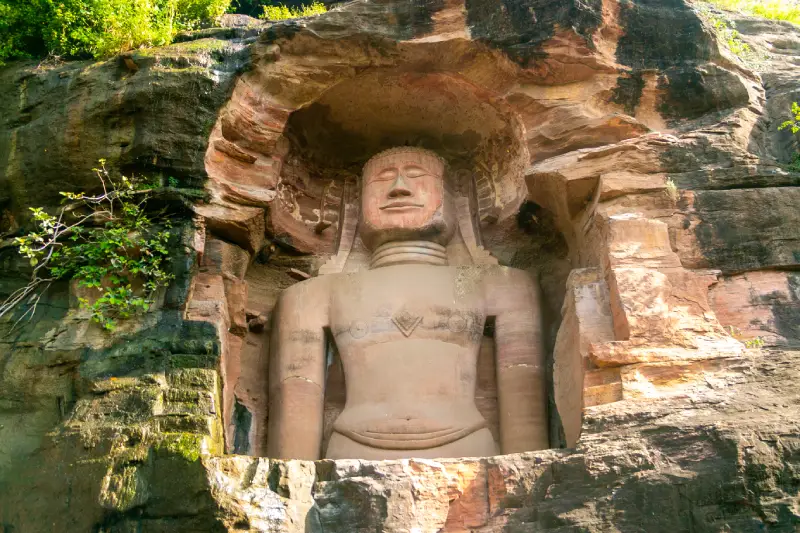
The iconoclast army of Babur, the first Mughal King in India had defaced much of the statues here merely 60 years after it was carved on the rockfaces. By the year 1473 C.E., the carvings at Siddhanchal were completed. There are in fact, more than 100 such Jain monuments scattered around the Gwalior city. These larger-than-life Jain monuments date between 7 th and 15 th century C.E. Located inside the Urvashi valley, the statues of Siddhanchal were damaged on order by Babur around 1527. It has also been documented in the memoirs from the 16 th century. Some of these idols were later restored by the Jain community after the fall of the Mughals.
The esteemed Scindia School, a private boarding school for boys, established in 1897 is also located near Urwai gate and Siddhanchal caves. “It is for the rich and privileged.” I was told as I marvelled atits sprawling campus and impressive building. But what impressed me more were the medieval temples found within the fort complex. Whether it’s the stand-alone Teli ka Mandir or dual Saas Bahu Temple, it left me awestruck with its grandeur and great details.
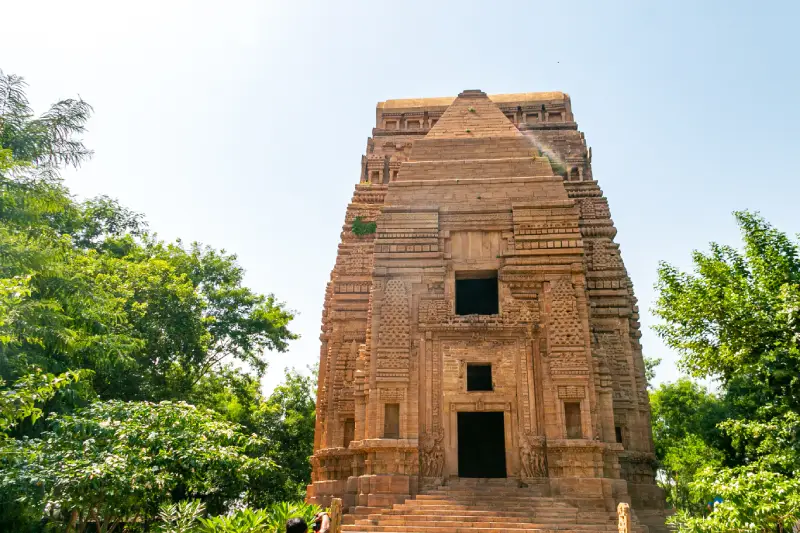
The tall Teli Ka Mandir dates between the 8 th and 9 th century C.E. This masterpiece has an unusual rectangular garbhagriha, as compared to the usual square design. I was most impressed by the sheer size of its Garbhagriha which was bereft of any idol.Exquisite sculptures of river goddesses Ganga and Yamuna flanked the 35 feet tall ornate door of the garbhagriha. A relief of Garuda, the vahana of Lord Vishnu watches over from the top.
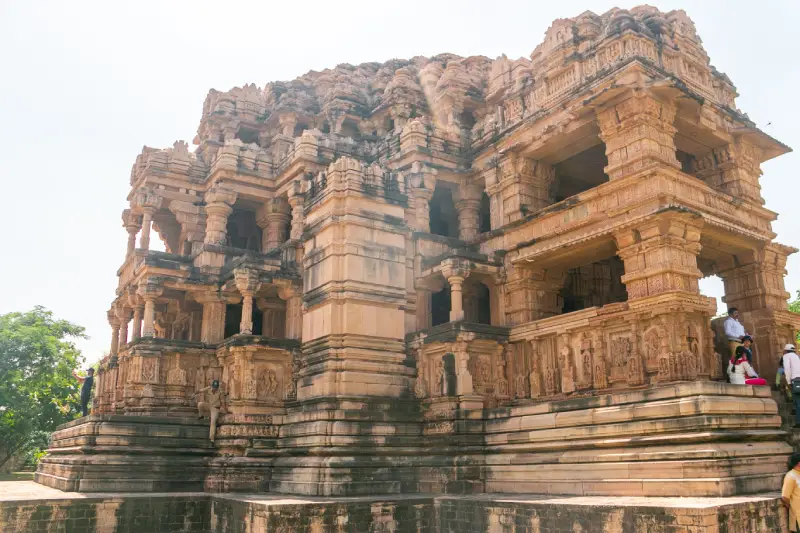
As per the local folklore, Teli Ka Mandir was built by an oil merchant instead of a King. One of the tallest temples of Gwalior, this place is a must-visit.The mystery behind the oddly named Saas Bahu Temple, located a few metres away revealed itself as my tour guide told me, “These twin temples are actually known as Sahasra Bahu temple. King Mahipala of the Kachchha paghata dynasty constructed this temple in 1093.
If the locals are to be believed, the bigger temple was made for the saas (mother-in-law), the smaller temple was built for the bahu (daughter-in-law). Hence, the nickname Saas Bahu temple.” This 11th century masterpiece made in sandstone, brims with intricately carved pillars, ornate walls, beautiful sculptures and detailed motifs at every inch of the walls and ceilings. It is indeed a poetry in stone. Also, the bird’s eye views from the smaller bahu temple are bewitching to say the least.
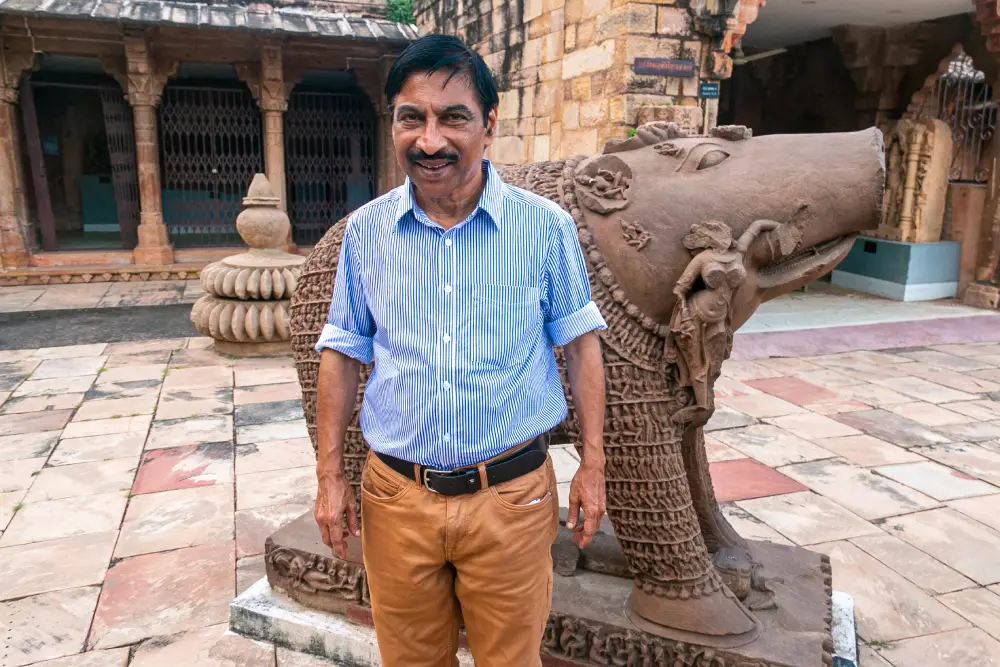
Other stops during the day included places such as Gujari Mahal and twin tombs of Mohammed Ghaus and Tansen. We also had amazing melt-in-mouth motichoor laddus at Bahadur Sweets inNaya Bazaar. It is 135 years old halwai shop.
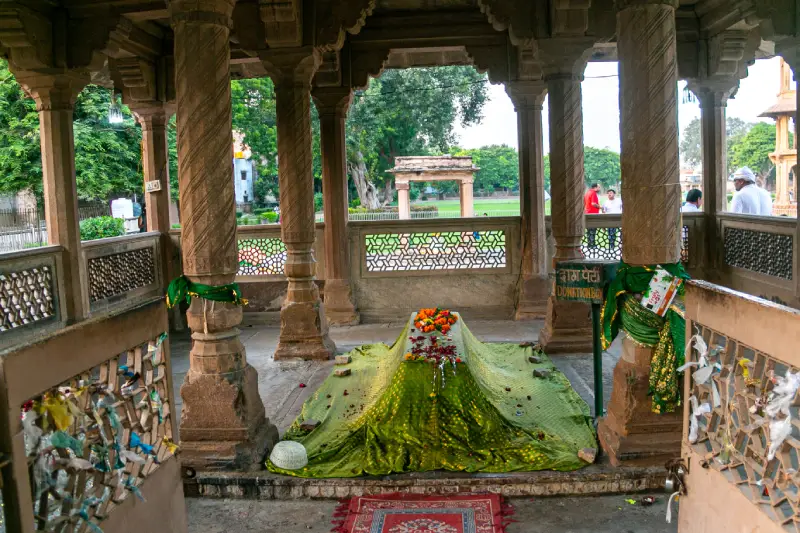
Shivpuri: Of abandoned European castles, crocodiles and solemn Chatris
Located 120 kms south of Gwalior and 96 kms west of Jhansi, Shivpuri turned out to be a surprise.
I have visited countless chattris in Rajasthan but I had little idea that some grand chattris exist inMadhya Pradesh as well. The two major chattris here are devoted to Madhav Rao Scindia and his mother Maharani Sakhya Raje Scindia. The intricately embellished marble chhatris are separated byhuge water tank.
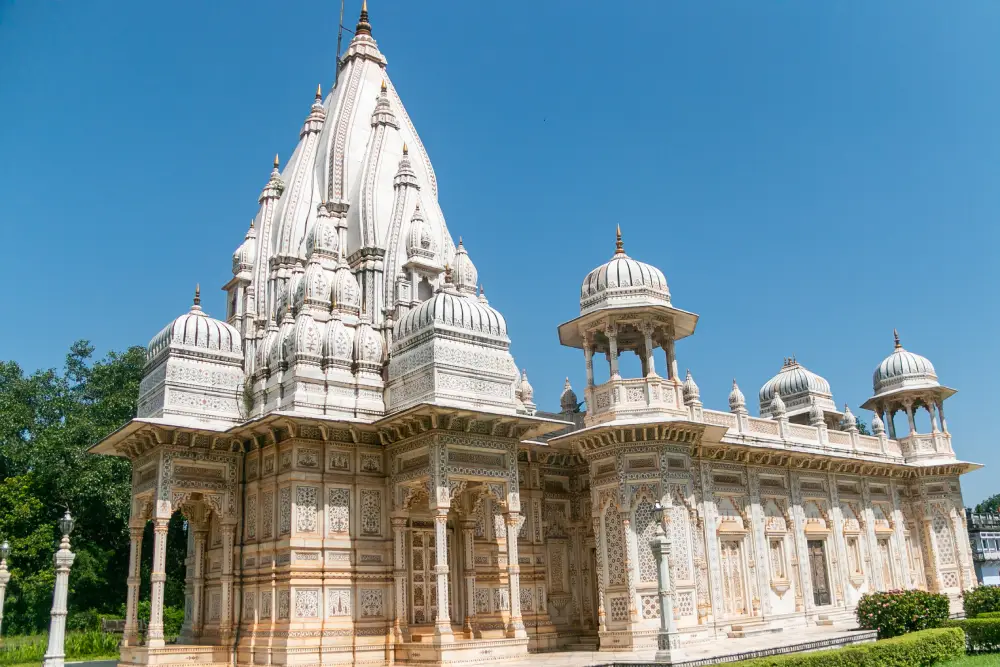
A visually stunning amalgamation of Hindu and Islamic architectural styles, these chattris are surrounded by well-manicured Mughal style gardens. As I ambled around the Mughal pavilions silently, I couldn’t help but admire the grand scale of this monument.After a quick refreshment of thalipeeth and lemonade, we headed towards another hidden gem, Surwaya Garhi. Located in a village setting, I walked on paths paved with cow-dung to arrive at this offbeat place. The ruins of this 10 th century fort houses several temples and even a monastery where students mastered various skill sets.
The students stayed here and learnt how to cut and shape stones. It is said that the student went on to carve the world-famous temples of Khajuraho, also situated in Madhya Pradesh.Next, we moved to Madhav National Park. A part of the upper Vindhyan hills, it was once the hunting ground of the Royal family of Gwalior. Established as a National Park in the year 1958, it has a diverse ecosystem dotted with huge lakes, grasslands and dense green forests.Wild animals found here are Leopard, Wild Boar, Wolf, Fox, Jackal, Wild Dog, Porcupine, Chinkara, Chowsinga, Chital, Sambar, Nilgai, Barking Deer and Python. I was lucky to spot large herds of chital, nilgai and rhesus monkeys. “Come winter, and you will see a large number of crocodiles sunbathing by the shore of the lake.”, my tour guide exclaimed excitedly.
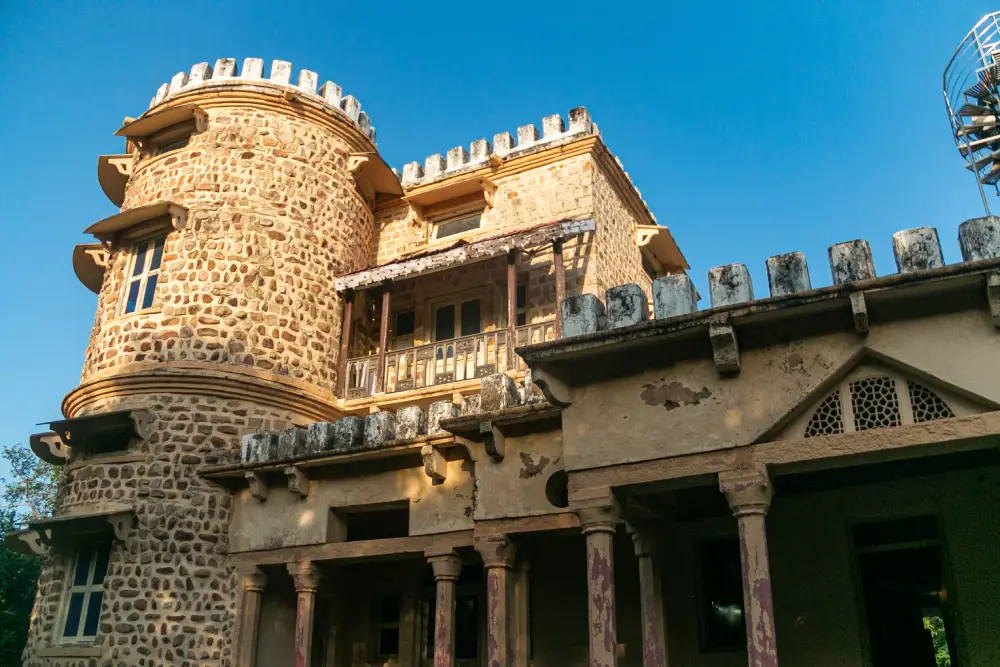
We stopped at an odd heritage building after few minutes of safari in the jungle. “This looks British.What business this building has in the middle of nowhere?”, I ruminated in my head.Sensing my curiosity, my tour guide began his monologue, “George Castle was constructed by Madhav Rao Scindhia I, the then Scindia ruler of Gwalior in the year 1911. It was built for the overnight halt of King George V of England who was supposed to go on a hunting expedition from here. However, while he was on his way, he had already hunted down a tiger. So, he returned without ever visiting the castle which was christened after him.”I took the narrow spiral stairs on the top floor and climbed atop the tower, soaking in the breathtaking view of the M shaped lake.
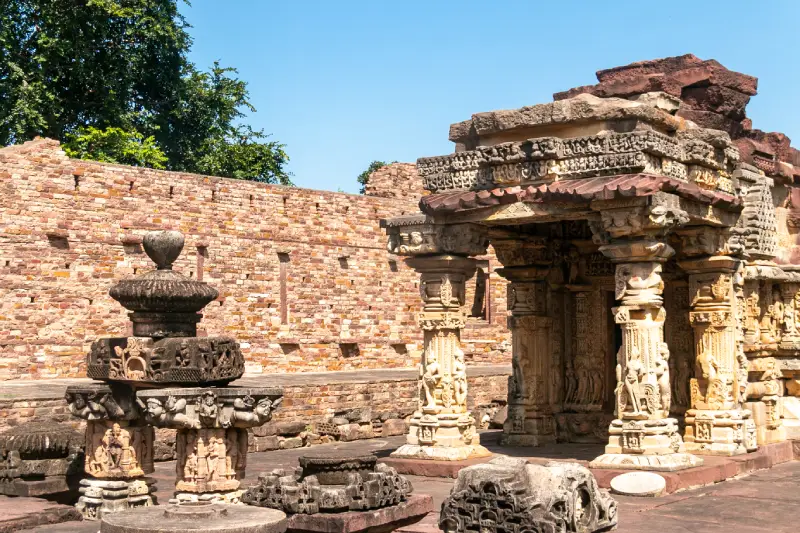
The panoramic views of the Kardhai forests surrounding the lake and a setting sun made it all the more surreal. After enjoying the views to my heart’s content, I stepped down and explored all the nooks and crannies of this obscure castle, in congruous and odd.Apart from the museum, I was most intrigued by the Italian bathtub, Italian floor tiles and Belgian glass windows. This turreted English-style castle sure merits a visit for its quirkiness if nothing else.
Datia and Sonagiri: Obscure splendour in the middle of nowhere!
This day threw more surprises at me than I was prepared for. I have been traveling solo across Madhya Pradesh and India since 2008 and this country still surprises me. Whether it is the huge abandoned Bir Singh Palace at Datia or the surreal Jain group of temples in Sonagiri, it is hard to explain their grandeur and uniqueness. Not many people are aware of these hidden gems near Gwalior.
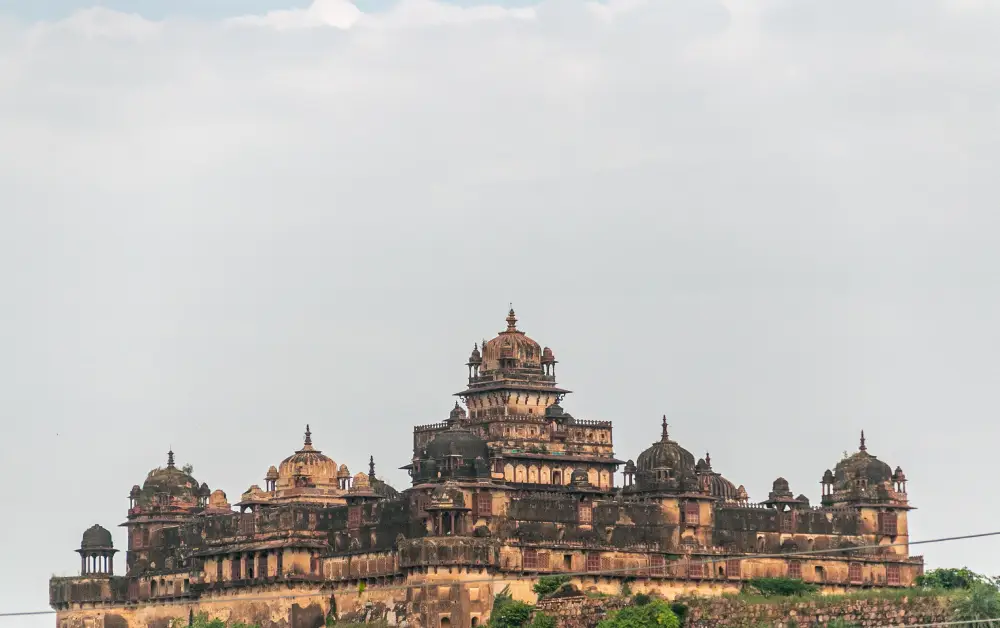
Bir Singh Palace at Datia was constructed by King Bir Singh Deo. Of all the 52 palaces he commissioned, Bir Singh Palace at Datia remains the biggest, most expensive and famous. However, what is ironical is the fact that none of the royal family ever lived in this palatial building fit for a Queen and King. A unique blend of Rajput and Mughal architectural style, this 7-storeyed palace is a sight to behold. The gloomy abandoned palace has a je nais se quois eerie beauty to it which separates it from other forts and palaces of India. The Bundela paintings on the walls and ceilings of some rooms are still in excellent condition. It is a tragedy that despite its attention to details, precision and architectural brilliance, no one from the Royalty ever stayed here. This grand palace was built to welcome Mughalruler Jahangir for a night’s stay.Next, I visited Sonagiri, also known as Swarnagiri.
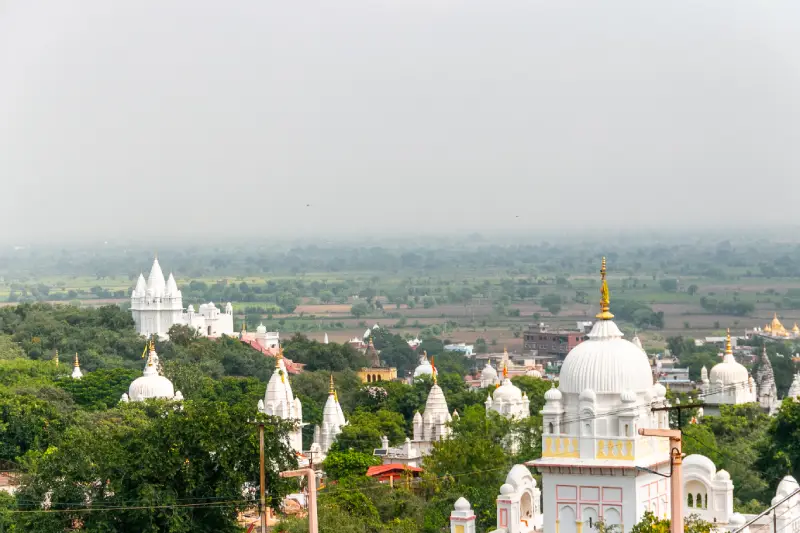
Located close to the Gwalior-Jhansi Road, thousands of devotees visit temples of Sonagiri everyday to attain Moksha, practice self-discipline, master austerity and offer prayers. A major Jain pilgrimage, it is home to hundreds of Jain temples, some colourful, some stark white and some with unusual towers. Dotted across the verdant valley, the temples of Sonagiri look straight out of a fairy tale when seen from a higher vantage point from temple number 57, also the most important temple here. Before soaking in the breathtaking panoramic views from the terrace here, I offered my prayers to the 11feet tall idol of Chandraprabha, also called as Bade baba. You can also visit the Jain Museum here.We ended the day by having a darshan at Pitambara Peeth, a major Shaktipeeth in Datia. We had lunch at the Datia Hotel Motel.
Gems of Gwalior: Hidden in plain sight!
Times Passion Hidden Secrets Heritage Trail had more surprises up its sleeves. On the last day, weexplored the rock cut temples of Gopachal Parvat, Jai Vilas Palace Museum, Twin Tombs ofMohammed Gaus and Tansen. Dated between the 7th and 15 th centuries C.E., the temples and colossal statues of Jain Tirthankaras here are as stunning as Siddhanchal Jain temples.
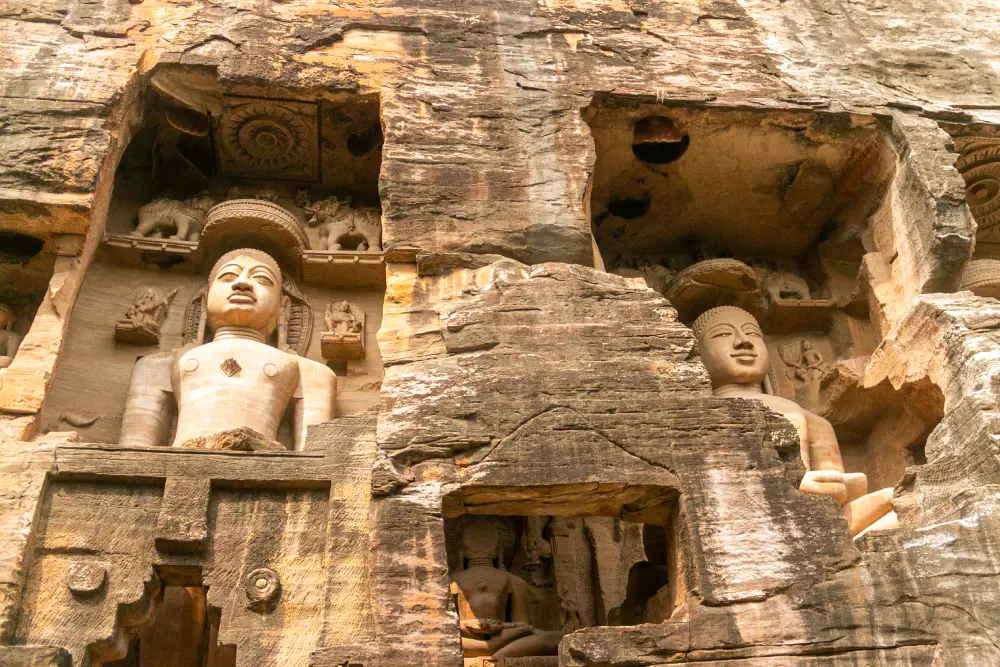
Several larger-than-life idols of naked Jain Tirthankaras in seated Padmasana posture and standing Kayotsarga posture can still be seen here. What makes Siddhanchal and Gopachal special is the fact that it is indeed rare to find such grand Jain idols elsewhere. Unfortunately, Babur’s army had defaced several idols here as well. Some idols were thankfully spared. The 47 feet tall idol of Lord Parshvanatha is the highlight here. It is the largest ever idol of Parshvanatha in lotus position found anywhere.
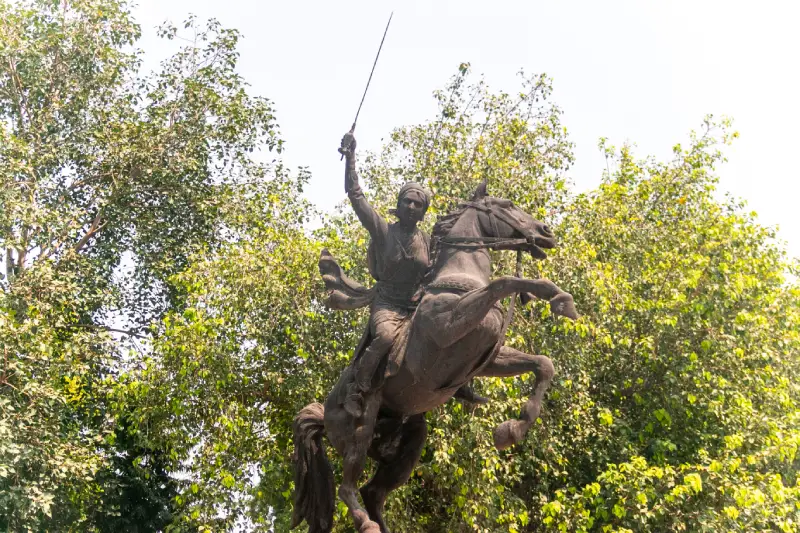
Next, we headed to the nearby Rani Jhani Laxmibai Memorial. Did you know that Rani of Jhansi was born on 19th November, 1835 C.E. in Kashi and breathed her last on 18 th June, 1858 C.E. at Gwalior? Situated in the Phool Bagh area of Gwalior, the Samadhi of Rani Lakshmi Bai is a perfect tribute to the great Indian warrior who stood up against the British valiantly. A leading figure of the IndianRebellion of 1857, many books and poems are written on Rani Laxmibai. I also noticed an eternal flame burning right next to the 8-metres tall metal statue of Rani Lakshmi Bai.
What followed next was a languorous lunch break at the local restaurant Panchvati Gaurav. We ordered their massive Rajasthani thali which comprised of daal-bati-churma, poori, various curries, kadhi, dhokla, roti, chaas etc. All the trail participants slipped into a food coma after polishing off the super-thali. Our next stop was Jai Vilas Palace Museum, which in conveniently located at walking distance from Taj Usha Kiran Palace, our home for the week. Hundreds of years old palanquins, dresses and even chairs belonging to the Scindia Royal Family were displayed at the various sections of the museum.My favourite part of the museum was the gallery which displayed ancient stone artefacts unearthed from places in and around Gwalior. Some of these idols were even a whooping 2,000 years old. The amount of history which Gwalior hides is mind boggling. It’s a pity that no one talks about it.
Wrap up!
We spent the evening exploring the beautifully lit colonial buildings at Maharaja Bada. But before we walked around this complex, we were facilitated during a special event at the Baija Taal. Students ofRaja Man Singh College of Gwalior mesmerised us with songs from the famous Gwalior Gharana in that ambient setting surrounded by water. It was indeed an evening to remember and a befitting grand finale to the week-long meanderings across Gwalior and nearby attractions.

